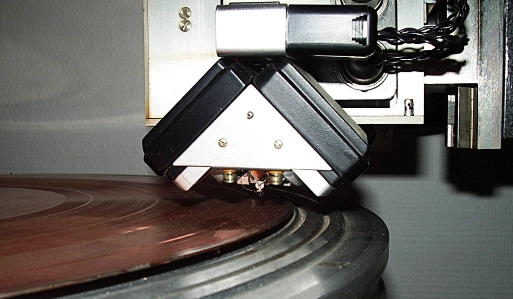Quick Summary:
Lacquer cutting is the traditional method of mastering vinyl, known for its warm, classic sound. Direct Metal Mastering (DMM) cuts directly into copper, producing cleaner, more detailed audio with less surface noise. Lacquer is often favored for indie, jazz, and vintage-sounding records, while DMM suits electronic, classical, and high-precision genres. Neither is better—your choice depends on your music, budget, and sonic goals.
Key Takeaways
- The technical and sonic differences between Lacquer and DMM
- How each process affects your final record
- Pros and cons from a mastering engineer’s point of view
- Which format suits your genre and production goals
What Is Lacquer Cutting?
Lacquer cutting is the original and still most common method for preparing audio for vinyl pressing. In this process, your final audio mix is etched into a soft lacquer disc—essentially an aluminum plate coated in nitrocellulose (a type of plastic).
The grooves are physically carved using a heated stylus connected to a cutting lathe. This master is extremely delicate, and typically used once to create a set of metal stampers.
Why Choose Lacquer?
- Classic sound: Known for its warm, rounded tones
- More forgiving: Slight imperfections can feel “musical”
- Preferred for: Jazz, classic rock, soul, indie, and lo-fi styles
What Is DMM (Direct Metal Mastering)?
DMM skips the lacquer step entirely. Instead, audio is cut directly into a copper-plated disc using a diamond stylus.
This approach was developed by Teldec in the late 1970s and is valued for its precision and durability. Because the copper surface is much harder than lacquer, DMM grooves are cut more cleanly and consistently.
Why Choose DMM?
- Crisp, clean high-end: Especially great for electronic or orchestral music
- Longer disc life: Masters are more durable
- No intermediate lacquer step: Slightly less noise and more definition
- Preferred for: Classical, techno, ambient, and modern pop
How Do They Sound Different?
This is the big question—and the answer depends on who you ask. But here’s how most engineers and artists describe it:
| Feature | Lacquer Cut | DMM |
|---|---|---|
| Tone | Warm, rounded, vintage | Bright, sharp, detailed |
| Noise Floor | Slightly higher | Slightly lower |
| Sibilance Handling | Smoothens S’s and highs | Reveals more top-end detail |
| Groove Shape | Slightly wider, softer edges | Narrower, more precise |
| Feel | Organic, nostalgic | Clean, digital-like |
Cost, Availability, and Practical Considerations
This is the big question—and the answer depends on who you ask. But here’s how most engineers and artists describe it:
- Lacquer cuts are more widely available—most pressing plants work with lacquer cutters by default.
- DMM requires specialized lathes, which are less common and more expensive.
- Turnaround time can vary. Lacquers can be cut relatively quickly. DMM may require coordination with specific mastering studios.
🎙️ At RPM Records, we offer both lacquer and DMM options. We’re happy to guide you through the decision based on your masters.
From Mastering to Pressing: Why the First Cut Matters
Whether you go with lacquer or DMM, the mastering cut becomes the blueprint for every copy of your record.
This first step shapes:
- The groove geometry
- The dynamic range
- The sound signature of your entire pressing run
A bad cut means poor test pressings and unhappy listeners. A good cut means a record that sells itself by sound alone.
Our Verdict: Choose What Serves the Music
If you want that warm, analog vibe? Go lacquer. If you want clean edges and modern detail? DMM is your friend.
Still unsure? Ask us. We’ve been helping independent artists make the right mastering choices for years—and we’re happy to share our ears.
Get Your Vinyl Cut Right
We’re a Copenhagen-based vinyl pressing plant that works closely with artists across Europe and beyond. Our team handles both lacquer cuts and DMM, depending on your needs.
Request a quote now and we’ll help you choose the best cut for your next release.

